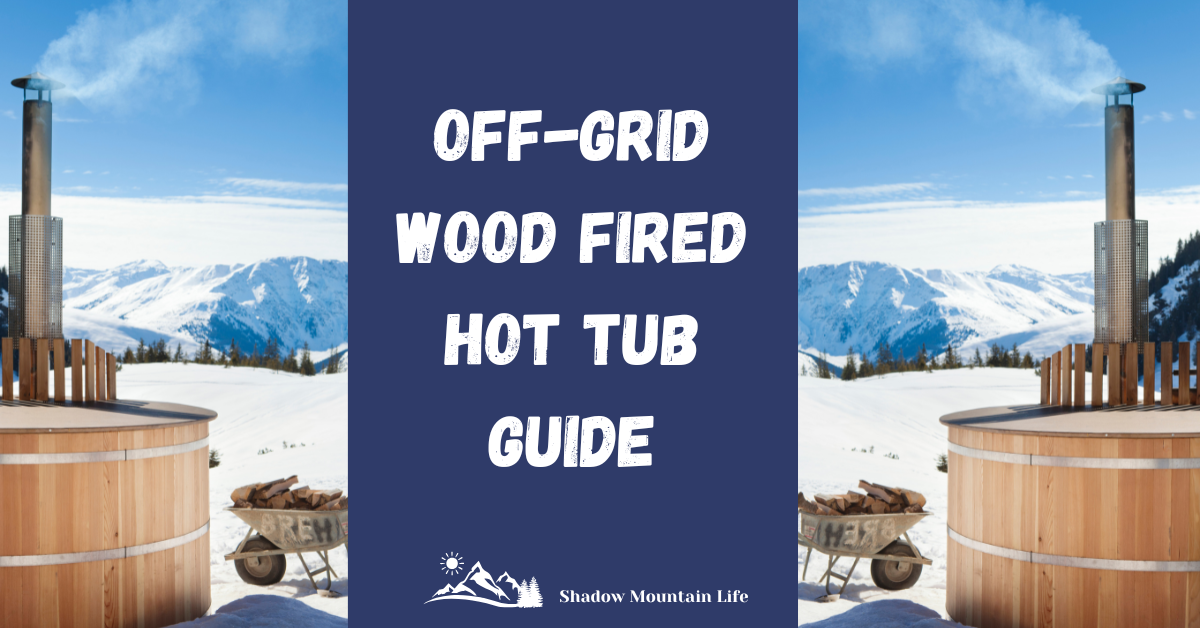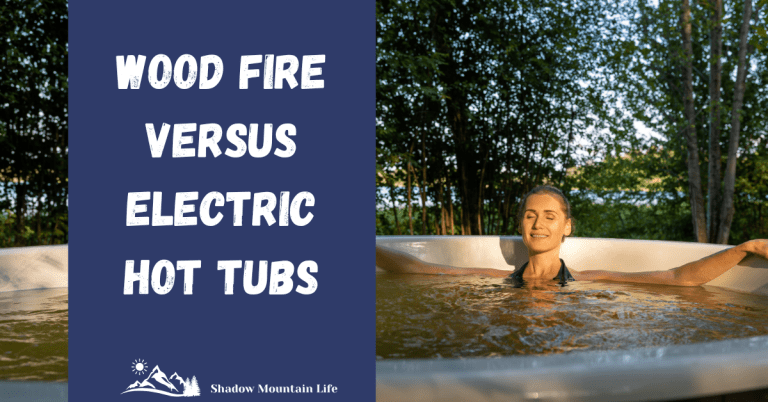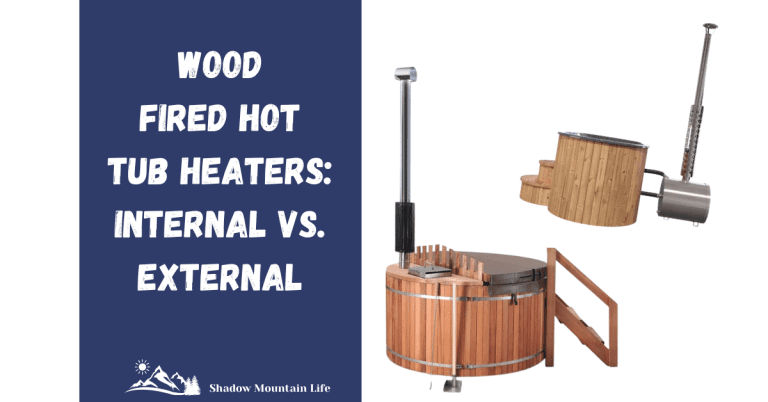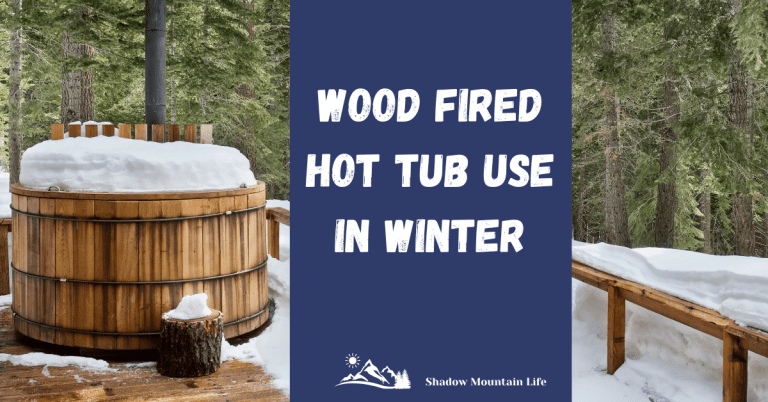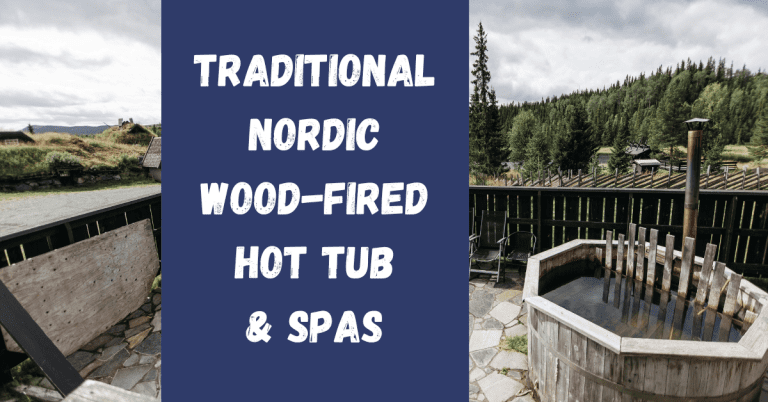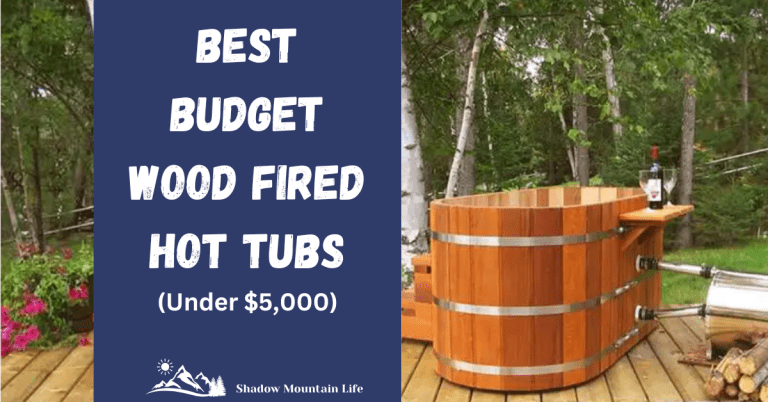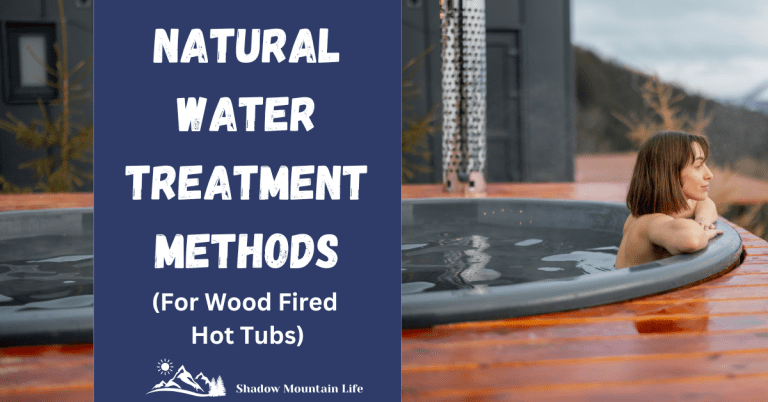Off-Grid Wood Fired Hot Tub: Your Complete Retreat Setup Guide
Imagine soaking in an off-grid wood fired hot tub, surrounded by nature, with no electricity in sight. It’s the perfect combination of remote living and luxurious relaxation! Whether you’re looking to enhance your cabin, tiny home, or remote retreat, this guide will walk you through everything you need to know about installing and maintaining a wood fired hot tub. From setup essentials to maximizing efficiency, let’s create your dream oasis.
Medical Disclaimer: We are not doctors. The health information in the article is for informational and educational purposes only. Please consult your doctor or other healthcare professional when making medical decisions.
Affiliate Disclaimer: We may make a commission if you purchase something through our links. Thank you!

What Makes Wood Fired Hot Tubs Perfect for Off-Grid Living?
There’s just something magical about soaking in a wood fired hot tub when you’re miles away from the chaos of modern life. No humming of electric motors, no reliance on the grid, no smell of chlorine—just the crackle of firewood, the scent of cedar, and the steam rising into the crisp evening air. For anyone pursuing off-grid living, a wood fired hot tub isn’t just a luxury—it’s the perfect blend of simplicity and self-sufficiency.
When I first started learning about off-grid options, I wasn’t sold on the idea of a wood fired tub. It felt like it would be a hassle to heat, and I worried about the logistics of maintaining it. But as I’ve learned more, it’s not just about soaking; it’s the whole process—gathering wood, building the fire, and waiting for the water to warm. It’s very similar to preparing a sauna– a process of slowing down and enjoying the actual “chores” of a simpler life.
The main reason wood fired hot tubs are perfect for off-grid living is their independence from electricity. If you’re relying on solar panels or a small generator, the last thing you want is another appliance sucking up precious power. Wood stove-based systems bypass all that. As long as you have access to firewood, you’re good to go. And hey, if you’ve got a lot of downed branches or scrap wood on your property, you’re basically running the tub for free which is great for sustainability!
Another major benefit is that these tubs are incredibly simple. There’s no complicated machinery to break down or repair. A sturdy barrel or cedar tub paired with a firebox is all you need. The materials—often natural and rustic—also blend beautifully with the environment, making them ideal for anyone who values aesthetics as much as functionality in their off-grid space.
Let’s talk about efficiency, too. Wood fired hot tubs are surprisingly fast to heat. With a decent-sized firebox and good insulation, you can get the water to a cozy temperature in just a couple of hours. And if you’re worried about heat loss, a well-fitted insulated cover can keep the warmth in for hours, even on chilly nights.
Pro tip: They type of firewood you use matters! Use hardwood like oak or maple for longer, hotter burns, and use softwoods like pine for quick fire starts.
There’s also the joy of customization. You can build a deck around the tub, add a small shelf for drinks, or even use natural stones to create a spa-like vibe. Off-grid living is about making the most of what you have, and wood fired tubs are incredibly adaptable to different setups.
Of course, there are challenges. You have to monitor the fire to keep the temperature just right (too hot, and you’re scalding; too cool, and it’s a lukewarm disappointment). But honestly, that’s part of the charm. It forces you to slow down and be present, which is kind of what we are looking for with the whole off-grid living thing, isn’t it?
In the end, a wood fired hot tub isn’t just a way to relax—it’s an extension of the lifestyle. It’s chemical-free hot tubbing that connects you to nature, encourages resourcefulness, and offers a kind of peace you just can’t get from anything electric. If you’re considering adding one to your setup, do it. You’ll thank yourself the first time you sink into that warm water under the stars.

Choosing the Right Wood Fire Hot Tub for Your Setup
Picking the perfect wood fired hot tub for your off-grid setup is all about balancing functionality, aesthetics, and your specific needs. There’s no one-size-fits-all solution—it depends on your space, lifestyle, and budget.
Size
First, think about size. Are you envisioning cozy solo soaks or gatherings with friends and family? Smaller tubs are easier to heat and use less water, which is a big deal if you’re hauling it from a nearby source. Larger tubs, though, can double as a social hub, especially if you’ve got a remote cabin or retreat and expect a lot of people to visit.
Materials Matter
Next, materials matter. Redwood and Western Red Cedar hot tubs and are popular for their durability and natural insulation and classic rustic vibe, but they can be pricey. Fiberglass or stainless-steel tubs are lighter and often more affordable, plus they’re easier to clean. Alumitub and Backcountry Recreation create some of the most beautiful hot tubs combining a beautiful aesthetic with easy maintenance.
My favorite choice is this combo between the classic cedar tub exterior and a marine grade aluminum like this great hot tub from Dundalk.
Portability Considerations
Portability might also be a factor. If your setup is temporary or you plan to move, a smaller, lighter tub is your best bet. For a permanent setup, you can invest in something sturdier with a built-in firebox.
Climate
Finally, consider your climate. If you live in a colder area, insulation and a well-fitted cover are important to maintaining warmth and cutting down on firewood use. For more tips on cold weather hot tubbing check out our article on Wood Fired Hot Tub Winter Use.
Setting Up Your Off-Grid Wood Fired Hot Tub: Step-by-Step
Setting up a wood fire hot tub might seem intimidating, but it’s simpler than it looks. With a little planning and patience, you’ll have your spa ready in no time.
Choose the Perfect Spot
Start with a level surface, ideally close to a water source and sheltered from wind. Make sure there’s enough space around the tub for safety and easy access to the firebox and a quick armful of wood. Be sure to pick a spot with a great view—it makes all the difference.
- Prepare the Base
A stable base is crucial. Gravel or a compacted dirt pad works well, but a wooden deck can add a polished look. Just make sure it’s sturdy enough to support the tub’s weight when filled, and make sure you consider where you will drain the tub. - Position the Tub and Firebox
Set the tub in place and connect the firebox. Most tubs come with a built-in or attachable firebox for easy assembly. Double-check that the firebox opening is easily accessible for feeding wood. - Fill the Tub
Use clean water from your nearest source, whether it’s a rainwater tank, well, or hauled manually. Fill it to the manufacturer’s recommended level, leaving room for displacement when you get in. - Light the Fire
Start with small softwood kindling to get the fire going, then add larger hardwood logs for heat maintenance. - Test and Adjust
Monitor the temperature closely—it usually takes 2-3 hours to reach the sweet spot of 100-104°F. Keep an eye on the fire and add logs as needed.
Once it’s ready, hop in, relax, look at the stars, and enjoy the fruits of your labor.
Heating Your Wood Burning Tub Efficiently
Heating a wood fire hot tub efficiently is all about the right techniques and a little preparation. The good news? With a few tweaks, you can save time, effort, and firewood while getting that perfect temperature.
Start with the right wood—this makes a huge difference. Hardwood like oak, maple, or hickory burns hotter and longer than softwoods like pine. Make sure your firewood is dry and seasoned for at least six months to avoid excess smoke and poor heat output.
Insulation is key. If your tub doesn’t have built-in insulation, consider adding a thermal blanket or using foam boards around the base. A well-fitted cover traps heat while you’re warming the water and prevents it from escaping between soaks.
When building your fire, use small, dry kindling to get things started. Gradually add larger logs once the fire is stable. Keep the firebox full but not overloaded and check it every 20-30 minutes to maintain consistent heat. Stirring the water occasionally helps distribute the warmth evenly.
For colder climates, preheating the water slightly by leaving it in the sun (if possible) can reduce heating time.
Finally, be patient. It typically takes 2-3 hours to heat the water to 100-104°F. Relax and enjoy the process.

Maintenance and Care for Long-Lasting Enjoyment
Keeping your wood burning hot tub in top condition isn’t complicated, but a little regular care goes a long way. With consistent maintenance, you’ll enjoy years of relaxing soaks without headaches.
First, empty and clean your tub regularly. How often depends on usage, but for frequent soakers, draining and scrubbing every 2-3 uses is a good rule of thumb. Use a soft brush and mild, non-toxic cleaner to avoid damaging the material. If your tub is wooden, avoid harsh chemicals as they can seep into the wood and affect the water.
Shower before entering the hot tub. Most causes of build-up in the tub come from body oils and dried skin. A quick rinse-off before using the hot tub can extend the length of the water use.
For water hygiene, consider adding natural sanitizers and installing a small filtration system. These can help reduce the frequency of water changes while keeping the tub clean and safe.
Firebox maintenance is equally important. After each use, clear out ash and inspect for rust or wear. Regularly oil metal parts to prevent corrosion and check that the chimney remains clear for efficient heating.
During winter, drain the tub completely to avoid freezing damage unless it’s in use.
Finally, make sure to invest in a good cover to protect your tub from debris and weather. A well-cared-for hot tub not only lasts longer but stays ready for those impromptu soaks that make off-grid living so special.

Enhancing the Experience: Accessories and Upgrades
A wood fired hot tub is already a fantastic way to relax, but a few thoughtful accessories and upgrades can take your experience to the next level. Small additions can make a big difference!
Start with a high-quality tub cover. Not only does it keep debris out, but it also helps retain heat, saving you time and firewood. Insulated covers are especially useful in colder climates where heat loss can happen quickly.
Adding a drink or snack tray is a simple yet luxurious upgrade. Whether you’re sipping a hot tea, enjoying a glass of wine, or indulging in snacks, having a dedicated space to place items makes soaking even more enjoyable. Some trays are designed to hook onto the edge of the tub, making them stable and easy to install.
For nighttime soaks, solar-powered LED lights can create a cozy, magical ambiance. Choose waterproof, energy-efficient lights that fit around the tub or hang in trees around the tub.
Want more comfort? Consider padded headrests or seating cushions. These small additions can make long soaks much more comfortable, especially if your tub has hard seating.
If you’re a true DIY enthusiast, adding a custom deck or platform around your tub can elevate the aesthetic while providing practical benefits like easier access, extra seating, or storage.
Finally, consider a floating thermometer to monitor the water temperature. It helps you keep things just right without constant guesswork.
These accessories and upgrades not only enhance your hot tub experience but also add a touch of luxury. Why settle for basic when you can make it extraordinary?
Safety Tips and Best Practices
A wood-fired hot tub is all about relaxation, but safety should always come first. Following a few best practices ensures your soaks stay enjoyable and accident-free.
Start with temperature control. The ideal soaking temperature is between 100-104°F. Use a thermometer to monitor the water, as overheating can cause burns or discomfort. Always test the water before stepping in, especially if kids are involved.
Keep the firebox secure. Make sure it’s properly installed and clear of flammable materials. Use dry, seasoned wood to minimize sparks and smoke, and never leave the fire unattended. A fire extinguisher nearby is a smart precaution.
Monitor water depth. Avoid overfilling to prevent spills when people get in and keep an eye on children to ensure they’re safe at all times.
Stay hydrated. The heat can dehydrate you faster than you’d think, so have water on hand to sip during your soak.
Finally, maintain proper hygiene. Keep the water clean with natural sanitizers or filtration, and shower before use to reduce contaminants.
A wood fired hot tub can transform your off-grid living experience, offering a blend of relaxation and sustainability. as well as providing an authentic outdoor bathing experience. By carefully selecting the right tub, following proper setup steps, and maintaining it with care, you’ll create a serene retreat that reconnects you with nature.

